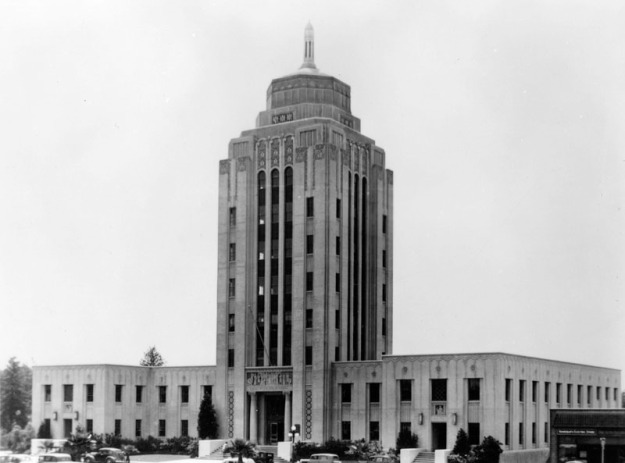On February 22, 1911, Van Nuys got its start with an ad in the Los Angeles Times: A free train ride was being offered to the “Van Nuys townsite,” for a free Washington’s Birthday barbecue, a patriotic speech about the birth of a town, and an auction of lots in an undeveloped part of the San Fernando Valley.
A train full of curious people came as the lots went up for bid, and a town was sold in an afternoon. The L.A. Times called the auction, “The beginning of a new empire and a new era in the Southland.”
The town’s namesake, Isaac Van Nuys, previously owned and ranched half of it in the open space south of what is now known as Roscoe Blvd. Among its buyers were a group of rich land speculators, who recognized that the Los Angeles aqueduct from the Owens Valley would provide unlimited water for the ranchers and farmers to come.
Isaac Van Nuys’ great ranch became the “Van Nuys townsite” and then simply, Van Nuys. No landmark house, statue, or even a formal portrait of the land baron stands. The only thing he left was his name.
What happened to the town sold in an afternoon? People bought lots, put up their tents, and built their homes. Van Nuys merchants were among the first in the Valley. The (Valley General Store) still standing at Van Nuys and Sylvan was the first real building, and it also housed the first bank in the San Fernando Valley.
The first high school in the valley was located in Van Nuys, and many storefronts still stand today that date from the early 1900’s. There was farming, canning, and the old Union Ice Plant from the days when produce was sent by rail to downtown markets. The Union Ice Plant remains today, next to what is now the Orange Bus Line.
Van Nuys became the second center for City services with the building of the Van Nuys City Hall in 1932, a place for federal, state and city services as well as the county courts.
The idyllic Bing Crosby song “I’ll Make the San Fernando Valley My Home” was Number 4 on the “Hit Parade” as the soldiers went ashore on D-Day. After World War II, the sleepy farming town changed, as veterans “discovered” the San Fernando Valley. After the war effort shifted to civilian commerce in the late 40’s and early 50’s, airplane manufacturing boomed as commercial aviation became the new mode of travel. In l946 General Motors built its Chevrolet assembly plant in Van Nuys. Farmland and orchards were replaced by endless tract homes that signaled a shift in Van Nuys’ commercial and agricultural base.
Remember the movie “American Graffitti”? The director, George Lucas, may claim it was Modesto—but anyone of a certain age “knows” it was Van Nuys Blvd, in the 1960’s, 1970’s and 1980’s where a youth culture was defined by “Wednesday night cruising” to show off one’s “wheels”.
It’s still a vital town—that generates its own famous people—actors Natalie Wood and Robert Redford, Marilyn Monroe and Jane Russell, athletes like NFL legend Bob Waterfield and the Dodgers’ Don Drysdale, Johnny Parsons of “Indianapolis 500” fame, and many others.
Times change—but the 1911 orator at the Van Nuys auction, Colonel Horn, challenged the audience that the desert they saw could be a town, so the current occupants face the challenge to make the town a place that future generations are proud to call home.
Additional Photos & Information about Van Nuys History
Whitsett Av was simply named for Whitsett.
William Whitsett was—to many—“Father of Van Nuys”.
Here for the “great 1911 barbecue”, half owner of all vacant property in 1920’s Van Nuys, developer of the 1951 shopping center, the 1963 (?) CHAMPS 6 story office building, a Boy Scout camp in the Sierras, all Whitsett’s projects.
Whitsett Av isn’t part of his legacy—save that it’s one of the only “major Valley street” named after a living person. (Chandler Bl, Sherman Way, Hazeltine, as others).





